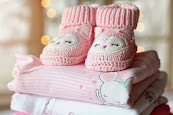HOW ARE CHILDREN'S CLOTHES
HOW ARE CHILDREN'S CLOTHES ?
sizes determined?
Children's clothing sizes are determined by a variety of factors, including the child's age, height, weight, and body proportions. Sizes for infants and toddlers are usually based on the child's age, while sizes for older children are based on the child's height and weight.
The process of determining clothing sizes for children involves taking a large number of body measurements and analyzing them to create a set of standard sizes. These measurements may include things like the child's chest and waist circumference, the inseam length, and the length of the arm. Clothing manufacturers use these measurements to create patterns for their garments, and then grade them up or down to create a range of sizes.
It's important to note that sizes can vary between brands and even within a brand. It is always best to check the size chart provided by the manufacturers before making a purchase, or even better try the clothes on your child before buying to ensure the best fit.
It's also worth noting that as children grow quickly, it can be useful to buy clothes that are slightly larger than their current size, as they will soon grow into them. This is especially true for pants, as children tend to grow taller before they put on much weight.
In addition to the measurement-based sizing system, there are also other systems used for children's clothing. One such system is the alpha-sizing system, which uses letters (such as XS, S, M, L) to indicate size rather than numbers. This system is often used for clothing designed for older children and teens, and can be less precise than the measurement-based system.
Another system that is often used for children's clothing is the "stage-based" system, which groups clothes into stages like newborn, 0-3 months, 3-6 months, 6-12 months, 1-2 years and so on. This system is often used for infants and toddlers, as it takes into account the rapid changes that occur during this period of a child's life.
It's also worth noting that some brands or retailers might use their own unique sizing system and may not align with the standard systems, so it's always best to check the provided size chart or try clothes on the child.
Overall, determining the appropriate size for children's clothing can be challenging, as every child is different and grows at their own pace. To ensure the best fit, it's always a good idea to try clothes on the child, or at least compare the child's measurements to the manufacturer's size chart before making a purchase.






